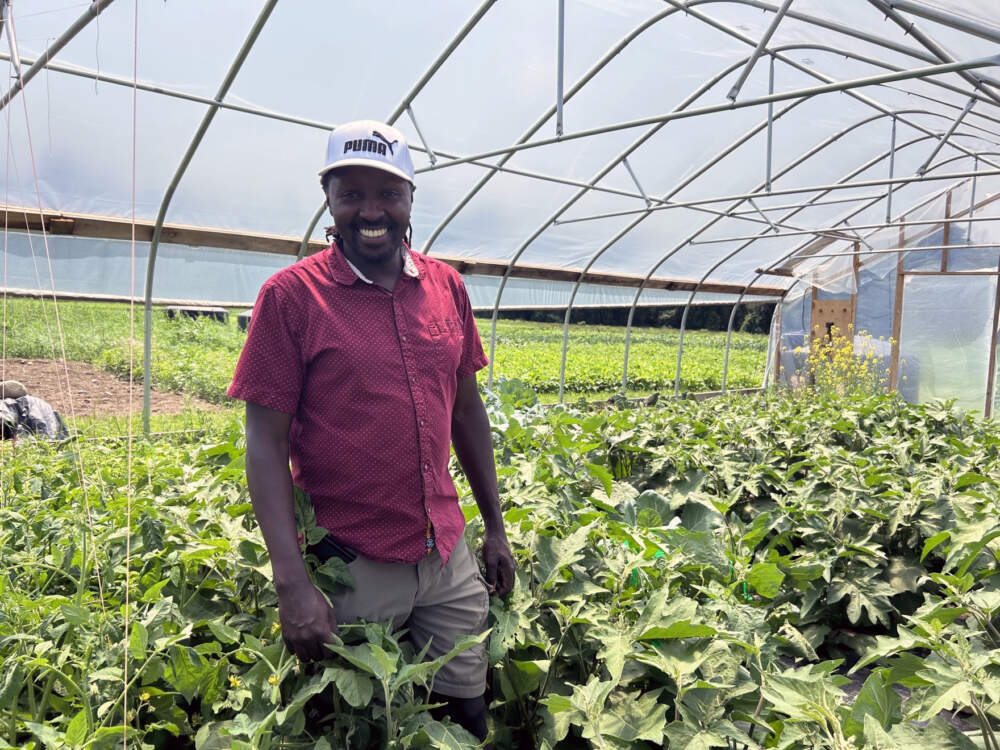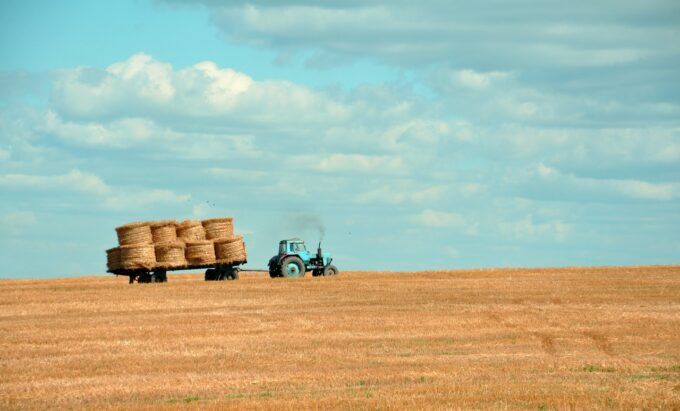Extending the use of agricultural products – Farms.com

Report on an Agricultural Byproduct Database for Sustainable Development
Introduction: Addressing Food Waste through Innovation
A new online database has been developed to track and promote the upcycling of agricultural byproducts, directly addressing global challenges of food loss and waste. This initiative provides a critical tool for transforming overlooked agricultural materials into valuable resources, thereby making significant contributions to several United Nations Sustainable Development Goals (SDGs). By systematically mapping the flow of crops from farm to processor, the tool aims to mitigate the environmental impact of food waste, which, according to a 2024 World Resources Institute report, accounts for approximately one-third of all food produced globally. This level of waste represents a substantial loss of resources, including water, land, and energy, and contributes to unnecessary carbon emissions, undermining efforts toward climate action and sustainable land use.
Methodology and Scope of the Database
Data Aggregation and Flow Tracking
The model’s foundation is built upon a multi-source data aggregation strategy. The process begins at the agricultural source and follows the crop’s journey through the value chain.
- Initial Data Collection: The process starts with field-level data from the United States Department of Agriculture (USDA) to establish baseline figures for planted and harvested crops.
- Flow Analysis: The model then tracks the “flow” of these crops through grading and processing stages. This involves differentiating between materials destined for primary markets (e.g., grocery stores) and those that are culled.
- Industry Collaboration: Data is refined through consultation with industry partners and analysis of industry reports to understand the fate of various byproducts.
Current and Future Crop Inclusion
The online tool is designed for scalability and is being populated in phases. Its current focus is on high-value horticultural crops, with a clear roadmap for expansion.
- Currently Tracked: Almonds, pistachios, pomegranates, and tomatoes.
- Forthcoming Additions: Wine grapes.
- Future Plans: Olives, stone fruits, and other California crops, with the potential to expand to row crops like corn and soybeans and ultimately be adapted for any crop globally.
Applications and Contributions to Sustainable Development Goals (SDGs)
Fostering a Circular Economy through Upcycling
The primary application of the database is to facilitate “upcycling”—the process of converting byproducts into new, higher-value products. This practice is central to achieving a circular economy and aligns with several SDGs.
- Tomato Pomace: The dried skins and seeds are rich in lycopene, an antioxidant with a market value ranging from $10 to $1,250 per kilogram. Upcycling this byproduct supports SDG 3 (Good Health and Well-being) by creating nutritional supplements.
- Pistachio Hulls: Abundant leftover hulls can be repurposed to improve soil health, contributing to SDG 15 (Life on Land) by promoting sustainable agriculture and combating land degradation.
Empowering Stakeholders for Economic and Environmental Gains
The database serves as a resource for a diverse group of stakeholders, fostering collaboration and innovation that supports sustainable economic growth.
- Academics: Can utilize the data to research and understand the flow and potential of agricultural materials.
- Entrepreneurs: Can identify overlooked materials to create new products, driving innovation and economic growth in line with SDG 8 (Decent Work and Economic Growth) and SDG 9 (Industry, Innovation, and Infrastructure).
- Growers and Processors: Can find new revenue streams for their byproducts, improving resource efficiency and profitability.
Direct Impact on Key Sustainable Development Goals
The initiative is a powerful instrument for advancing the 2030 Agenda for Sustainable Development, with a particularly strong emphasis on the following goals:
- SDG 12 (Responsible Consumption and Production): The tool directly addresses Target 12.3, which aims to halve per capita global food waste and reduce food losses along production and supply chains. By identifying and creating value for byproducts, it promotes sustainable production patterns.
- SDG 2 (Zero Hunger): Reducing food loss along the value chain is a critical component of achieving food security. Maximizing the use of every part of a harvest ensures that agricultural resources contribute more effectively to the global food supply.
- SDG 13 (Climate Action): As noted, food waste is a significant source of carbon emissions. This tool helps mitigate climate change by diverting organic waste from landfills and ensuring that the energy and resources invested in agriculture are not wasted.
Analysis of Sustainable Development Goals in the Article
1. Which SDGs are addressed or connected to the issues highlighted in the article?
- SDG 2: Zero Hunger: The article connects to this goal by discussing agricultural practices and the use of byproducts. Specifically, the mention of using pistachio hulls to “improve soil health” relates to promoting sustainable agriculture, which is essential for long-term food security.
- SDG 9: Industry, Innovation, and Infrastructure: This goal is central to the article, which describes the creation of an innovative online tool, the “Byproduct Database.” This database serves as a technological solution to promote research and connect growers, processors, and entrepreneurs, fostering innovation in the upcycling community.
- SDG 12: Responsible Consumption and Production: This is the most prominent SDG in the article. The entire premise of the database is to address food loss and waste by finding new uses for agricultural byproducts (“upcycling”). The article explicitly states that the tool helps tackle food waste, citing that “about 40 percent of food is lost or wasted along the value chain.”
- SDG 15: Life on Land: The article touches upon this goal through its discussion of soil health. The example of using leftover pistachio hulls to “improve soil health” directly relates to protecting and restoring terrestrial ecosystems and halting land degradation.
2. What specific targets under those SDGs can be identified based on the article’s content?
- Target 2.4: By 2030, ensure sustainable food production systems and implement resilient agricultural practices that increase productivity and production, that help maintain ecosystems, that strengthen capacity for adaptation to climate change, extreme weather, drought, flooding and other disasters and that progressively improve land and soil quality. The article’s mention of using pistachio hulls to “improve soil health” is a direct example of a practice that improves soil quality.
- Target 9.5: Enhance scientific research, upgrade the technological capabilities of industrial sectors in all countries… encouraging innovation. The article describes a database created by academics (“Spang and his team created the database”) to be used for research and to spur innovation among “entrepreneurs in the upcycling community.”
- Target 12.3: By 2030, halve per capita global food waste at the retail and consumer levels and reduce food losses along production and supply chains, including post-harvest losses. The article directly addresses this target by highlighting the problem of food waste, stating, “about 40 percent of food is lost or wasted along the value chain,” and presenting the database as a tool to turn “today’s food waste” into “tomorrow’s resources.”
- Target 12.5: By 2030, substantially reduce waste generation through prevention, reduction, recycling and reuse. The concept of “upcycling” and “finding new uses for byproducts,” such as extracting lycopene from tomato pomace, is a clear example of reuse and waste reduction.
- Target 15.3: By 2030, combat desertification, restore degraded land and soil, including land affected by desertification, drought and floods, and strive to achieve a land degradation-neutral world. The use of pistachio hulls to improve soil health is a practice that contributes to restoring degraded soil.
3. Are there any indicators mentioned or implied in the article that can be used to measure progress towards the identified targets?
- Percentage of food loss and waste: The article explicitly mentions a key indicator for Target 12.3 by citing a report that “about 40 percent of food is lost or wasted along the value chain.” This percentage is a direct measure of the problem the tool aims to solve.
- Economic value of upcycled materials: The article provides a specific financial indicator for the value of upcycling by stating that “lycopene prices can range from $10 to $1,250 per kilogram.” This metric can be used to measure the economic success and incentive for waste reduction under Target 12.5.
- Scope and adoption of the innovative tool: The expansion of the database is an implied indicator of progress for Target 9.5. The article notes the tool currently tracks byproducts of specific crops (almonds, pistachios, etc.) and that “work on olives, stone fruits, and other crops… are planned for the future,” with the potential to be “used really for any crop in the world.” The growth in the number of crops and users (academics, entrepreneurs, growers) would measure its impact.
- Application of byproducts for soil improvement: The use of pistachio hulls to “improve soil health” is a qualitative indicator. Progress towards Targets 2.4 and 15.3 could be measured by tracking the volume of agricultural byproducts diverted from waste streams to be used as soil amendments.
4. Table of SDGs, Targets, and Indicators
| SDGs | Targets | Indicators |
|---|---|---|
| SDG 2: Zero Hunger | 2.4: Ensure sustainable food production systems and improve land and soil quality. | Use of agricultural byproducts (e.g., pistachio hulls) to improve soil health. |
| SDG 9: Industry, Innovation, and Infrastructure | 9.5: Enhance scientific research and upgrade technological capabilities to encourage innovation. | The creation and planned expansion of the Byproduct Database to include more crops. |
| SDG 12: Responsible Consumption and Production | 12.3: Halve food waste and reduce food losses along production and supply chains. | The statistic that “40 percent of food is lost or wasted along the value chain.” |
| SDG 12: Responsible Consumption and Production | 12.5: Substantially reduce waste generation through reuse (upcycling). | The market price of upcycled products, such as lycopene ($10 to $1,250 per kg). |
| SDG 15: Life on Land | 15.3: Combat desertification and restore degraded land and soil. | The application of byproducts like pistachio hulls as a method to improve soil health. |
Source: m.farms.com

What is Your Reaction?
 Like
0
Like
0
 Dislike
0
Dislike
0
 Love
0
Love
0
 Funny
0
Funny
0
 Angry
0
Angry
0
 Sad
0
Sad
0
 Wow
0
Wow
0
















































/environment-climate-change-and-health-(ech)/water-sanitation-hygiene-and-health-(wsh)/landfill-tuvalu-36092.tmb-1200v.jpg?sfvrsn=5c21fe40_1#)

.jpg.webp?itok=0ZsAnae9#)
























